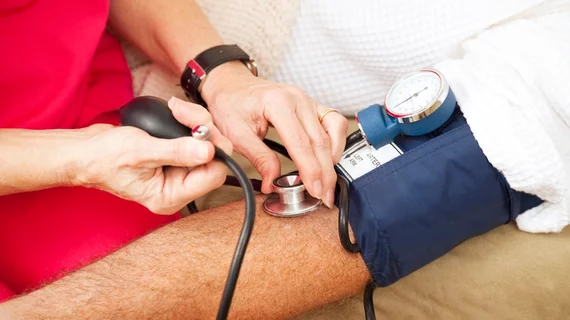A hypertension management protocol from an integrated healthcare system was successfully adopted by a network of safety-net clinics, resulting in substantial improvements in blood pressure control for patients of all races.
Lead author Valy Fontil, MD, MAS, and colleagues reported the results of the intervention in Circulation: Cardiovascular Quality and Outcomes. It was adapted from the practices at Kaiser Permanente Northern California—which has achieved hypertension control rates near 90 percent—and implemented across 12 safety-net clinics in the San Francisco Health Network.
Safety-net facilities treat a disproportionate number of low-income and minority patients, and typically have lower rates of hypertension control. But the evidence-based treatment protocol improved the rates of blood pressure control at the pilot site from 68 percent to 74 percent over two years. At the other 11 clinics combined, BP control increased from 69 to 74 percent over 15 months.
Blood pressure control for individuals diagnosed with hypertension was defined as below 140/90 mm Hg for patients younger than 60 or with diabetes or chronic kidney disease. The threshold was 150/90 for patients in their 60s or older who didn’t have diabetes or chronic kidney disease.
“This study demonstrates that evidence-based treatment protocols are transportable to safety-net settings and could play a pivotal role in achieving improved BP control and reducing hypertension disparities,” Fontil et al. wrote. “Our findings can inform adoption of best practices to improve BP control at safety-net clinics which must play a pivotal role in achieving nation-wide improvements in BP control and reducing socioeconomic disparities in hypertension.”
The intervention consisted of four key components: a hypertension registry, a simplified treatment protocol that included fixed-dose combination medications and diuretics, a standardized BP measurement protocol and BP check visits led by registered nurses and pharmacists.
Nearly 16,000 people were included in the study and improvements in BP control rates were observed across all races and ethnicities. Blacks saw rates improve from 60 to 66 percent, whites went from 69 to 75 percent, Latinos from 67 to 72 percent and Asians from 78 to 82 percent.
“After adjusting for age and sex, we found that post-intervention improvements in BP control were greater in blacks as compared with whites likely because clinics with higher concentrations of blacks started with lower BP control and experienced higher rates of improvement,” the researchers noted. “Our findings underscore what has been observed in other settings—that effective health system interventions in clinical settings may improve health outcomes for groups disproportionately affected by a condition, but may not eliminate disparities between groups.”
Additional targeted interventions for black patients may be necessary to completely eliminate the racial disparity, Fontil and colleagues wrote.
The authors said their study wasn’t designed to single out which components of the intervention were most effective, but previous evidence indicates treatment intensification and increasing the frequency of patient visits are crucial to improving blood pressure control.
There were also improvements in evidence-based medication use in this study, with the use of fixed-dose combination pills increasing from 10 to 13 percent. The percentage of patients receiving prescriptions for an angiotensin-converting enzyme inhibitor along with a thiazide diuretic increased from 36 to 40 percent.
“These are important improvements because fixed-dose combination medications have several advantages, including faster titration to BP goal, improved adherence, and lower patient cost, and are associated with improved BP control,” Fontil et al. wrote. “In addition, combining thiazide diuretics with ACE inhibitor improves efficacy and may be particularly important for the effective use of ACE inhibitors in black patients.”

